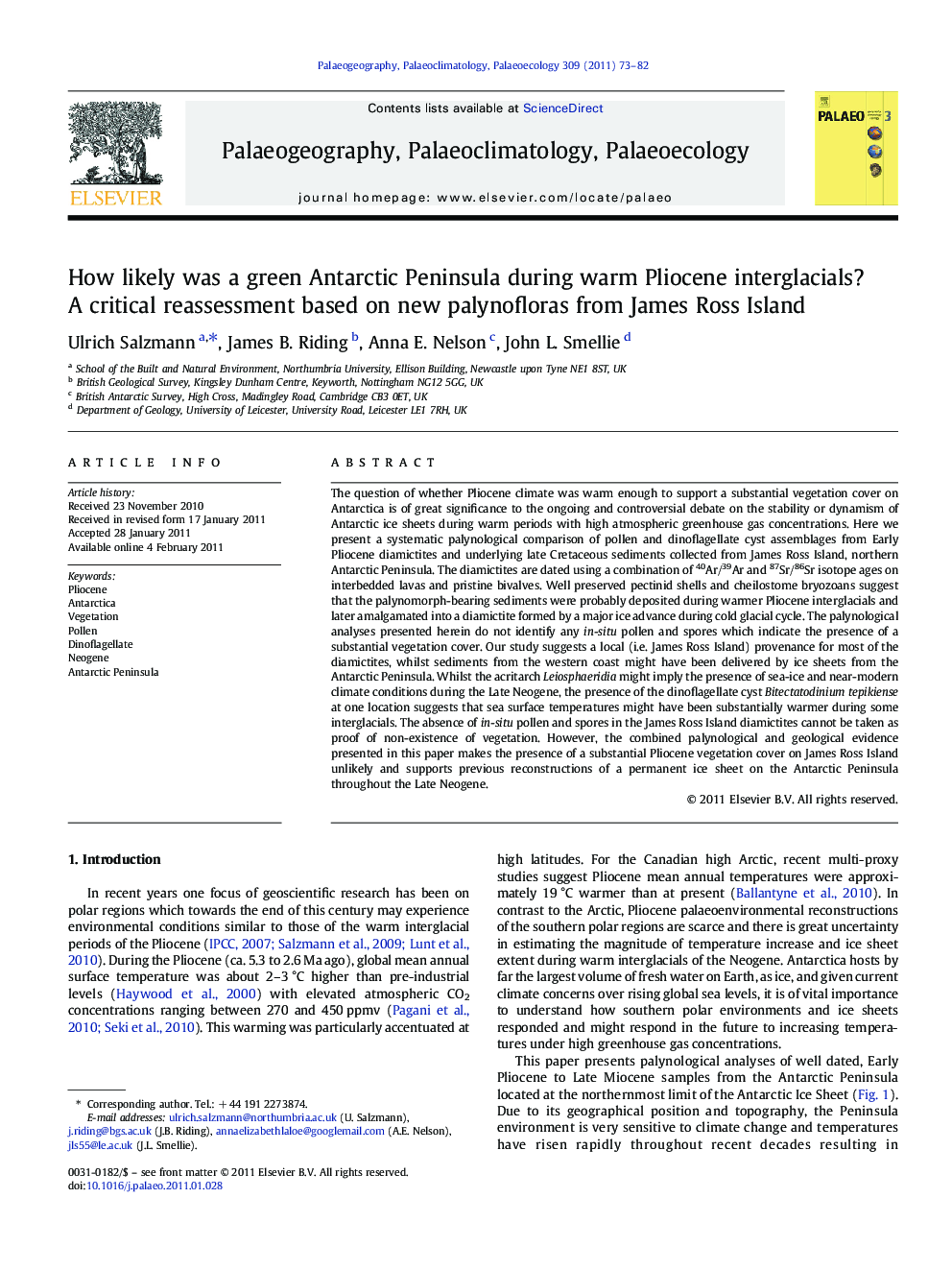| کد مقاله | کد نشریه | سال انتشار | مقاله انگلیسی | نسخه تمام متن |
|---|---|---|---|---|
| 4467173 | 1622250 | 2011 | 10 صفحه PDF | دانلود رایگان |

The question of whether Pliocene climate was warm enough to support a substantial vegetation cover on Antarctica is of great significance to the ongoing and controversial debate on the stability or dynamism of Antarctic ice sheets during warm periods with high atmospheric greenhouse gas concentrations. Here we present a systematic palynological comparison of pollen and dinoflagellate cyst assemblages from Early Pliocene diamictites and underlying late Cretaceous sediments collected from James Ross Island, northern Antarctic Peninsula. The diamictites are dated using a combination of 40Ar/39Ar and 87Sr/86Sr isotope ages on interbedded lavas and pristine bivalves. Well preserved pectinid shells and cheilostome bryozoans suggest that the palynomorph-bearing sediments were probably deposited during warmer Pliocene interglacials and later amalgamated into a diamictite formed by a major ice advance during cold glacial cycle. The palynological analyses presented herein do not identify any in-situ pollen and spores which indicate the presence of a substantial vegetation cover. Our study suggests a local (i.e. James Ross Island) provenance for most of the diamictites, whilst sediments from the western coast might have been delivered by ice sheets from the Antarctic Peninsula. Whilst the acritarch Leiosphaeridia might imply the presence of sea-ice and near-modern climate conditions during the Late Neogene, the presence of the dinoflagellate cyst Bitectatodinium tepikiense at one location suggests that sea surface temperatures might have been substantially warmer during some interglacials. The absence of in-situ pollen and spores in the James Ross Island diamictites cannot be taken as proof of non-existence of vegetation. However, the combined palynological and geological evidence presented in this paper makes the presence of a substantial Pliocene vegetation cover on James Ross Island unlikely and supports previous reconstructions of a permanent ice sheet on the Antarctic Peninsula throughout the Late Neogene.
Research Highlights
► This study assesses the likelihood of Neogene vegetation on the Antarctic Peninsula.
► Palynological analyses of fossiliferous diamictites from James Ross Island are shown.
► Results provide no evidence for the presence of a substantial vegetation cover.
► Study supports previous reconstructions of a permanent Neogene Peninsula ice sheet.
Journal: Palaeogeography, Palaeoclimatology, Palaeoecology - Volume 309, Issues 1–2, 15 August 2011, Pages 73–82